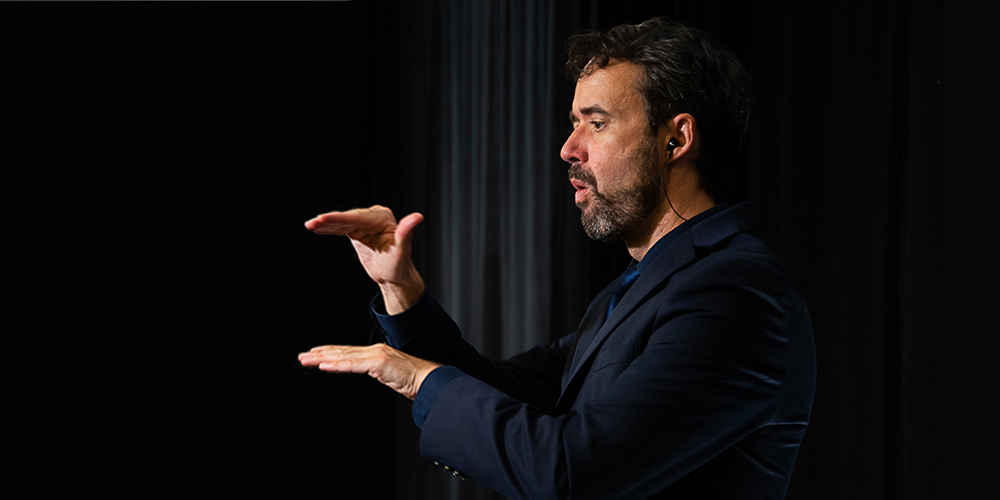Sign language, much more than a way to communicate
Children learn to communicate from an early age, and they find their own way to interact with the people around them. For the Deaf community, sign language is their means of communication.
Interpretation in langue des signes québécoise (LSQ) and in American Sign Language (ASL) is one of the many language services provided by Public Services and Procurement Canada’s (PSPC) Translation Bureau.
Sign language interpretation allows the Deaf community to participate in Government of Canada events across the country. One such event is Pope Francis’ visit in July 2022. Along with the other Translation Bureau interpreters, including Indigenous languages interpreters, the LSQ and ASL interpreters worked tirelessly before and during the visit to make it accessible to all Canadians.
A different kind of preparation
The interpreters’ preparation for this event was unique. Frédérick Trudeau was part of the LSQ interpreter team. “Each day, we met with a Deaf consultant who was very knowledgeable about the Catholic religion. We worked with him to prepare to interpret the Masses, which is different from a typical interpretation.” His colleague, Clare Gallant, an ASL interpreter, adds: “It was different because of the inclusion of religious concepts and texts of Masses and various prayers.”

The interpreters were given the homilies in advance so they could work on interpreting them. “We went through the text, and the interpreters prepared together,” says Frédérick.
Frédérick says that the consultant was touched by the sensitivity shown by the interpreters. “It’s a balancing act between the sensitive side and the professional side. There’s often a challenge in transposing that sensitivity without going into sentimentality, because when that happens, the professional side is lost.”
A career choice that may be natural or unexpected
Both of his parents were deaf, so Frédérick was exposed to the Deaf community at a very young age. As soon as he graduated from high school, he was asked to interpret courses at the Cégep du Vieux Montréal. That’s how he naturally turned to a career as a sign language interpreter 27 years ago and, for over 10 years now, he has shared his passion with the next generation of interpreters at the Université du Québec à Montréal.
He stresses the importance of understanding the Deaf community and its culture and being part of it to interpret content well. “You can’t just learn through classes. You have to be around the community to some degree.”

While LSQ was part of Frederick’s life from an early age, the opposite is true for Clare Gallant when it comes to ASL. “In all honesty, it was never something I aspired to or even knew about. I wanted to take some exciting classes before I started my next degree. Sign language looked interesting, so I took a basic class. That snowballed and I discovered that I had an aptitude for it.”
Both interpreters agree that practice makes perfect—nothing beats practice to master the subtle art of sign language interpretation. “The real learning occurs once you actually start working,” says Clare. Like Frédérick, she stresses that “it is also with the help of the Deaf community that interpreters grow and become more skilled.”
Supply and demand
If interpreting is how you become an interpreter, then the Translation Bureau’s interpreters have already reached new heights because there is no shortage of work. With the Accessible Canada Act, demand has exploded. “Before, there was a tendency to offer interpretation by request only, but with the current emphasis on accessibility, the tendency is to offer de facto interpretation and not by request,” explains Frederick.
To learn more about sign languages, check out the resources compiled by the Translation Bureau on the Language Portal of Canada.
Check out Our stories to explore stories of the PSPC people and projects making a difference in the lives of Canadians.